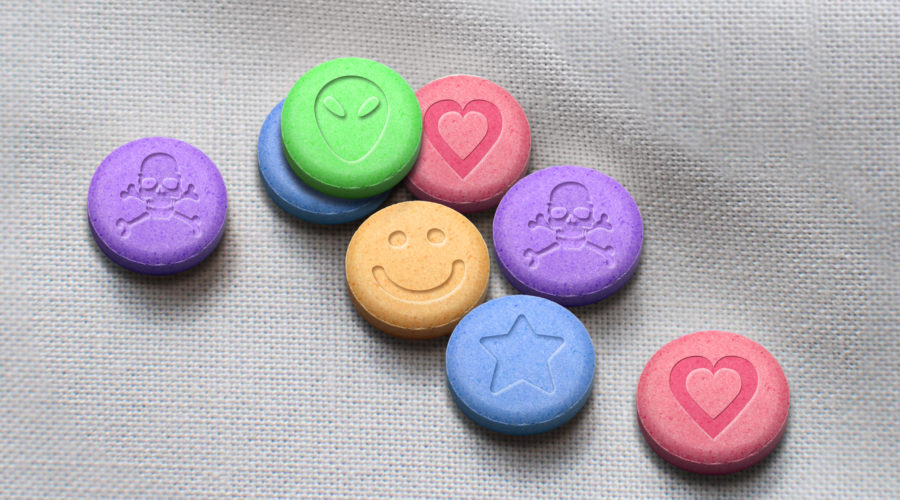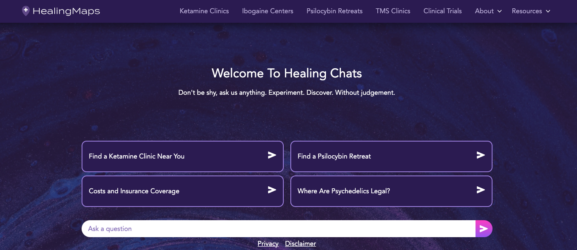What Does MDMA Do To Your Brain
MDMA remains one of the most popular recreational drugs in the world. Thanks to its unique chemical structure and effects, MDMA interests research scientists and mainstream drug enthusiasts alike.
But what does MDMA do to the brain? What happens to the brain after an MDMA trip? Are there risks associated with regular use?
Read on to better understand what MDMA does to your brain.
RELATED: What Is Molly (MDMA) Powder?
Here’s a Timeline of What Happens to Your Brian When You Take MDMA
When you consume MDMA (3,4-Methylenedioxymethamphetamine), commonly known as ecstasy, a series of chronological events take place in the brain.
Here’s a simplified breakdown:
- Ingestion (0-30 minutes): After ingestion, MDMA is absorbed into the bloodstream and travels to the brain.
- Release of Neurotransmitters (Approximately 15-30 minutes): MDMA increases the release of several neurotransmitters in the brain, notably serotonin, dopamine, and norepinephrine. This release leads to the primary effects of MDMA.
- Peak Effects (1-3 hours): This is when MDMA’s effects are most strongly felt. Users often experience heightened sensory perception, increased energy, euphoria, emotional warmth, and a sense of well-being.
- Reuptake Inhibition (Throughout the Experience): MDMA also acts as a reuptake inhibitor, particularly for serotonin. This means it blocks the reabsorption of serotonin in the brain, leading to increased levels of this neurotransmitter.
- Neurological Changes (During and Post-Experience): Changes in brain activity are observed, such as increased connectivity between different parts of the brain.
- Comedown (3-6 hours after ingestion): As the drug’s effects wear off, users may experience a comedown, marked by feelings of depression, irritability, and fatigue. This is partly due to the depletion of neurotransmitters like serotonin.
- After-Effects (24-48 hours): Users might experience a range of after-effects, including mood swings, cognitive issues, and physical discomfort. These effects are sometimes referred to as the “Tuesday Blues” or “Suicide Tuesdays” when MDMA is taken on a weekend.
- Long-Term Effects (Varies): Repeated use of MDMA can lead to long-term changes in the brain, including potential damage to serotonin neurons. Symptoms can include long-term mood problems, memory issues, and impaired cognitive functions.
These timings can vary due to factors like individual metabolism, MDMA purity, and dosage taken. Additionally, MDMA can have harmful effects, especially when taken in uncontrolled environments or in combination with other substances. Always consider the health risks and legal implications before using any psychoactive substance.
What Is MDMA?
3,4-Methylenedioxymethamphetamine (MDMA) is a synthetic drug that was first synthesized in 1912 by German pharmaceutical company Merck. It was not until the late 1970s that MDMA would be brought to a larger audience by the late renowned drug researcher and psychonaut Alexander Shulgin, where it was used by psychiatrists and therapists in largely underground experimental therapeutic settings.
By the late 1980s, MDMA had become a popular recreational drug in the burgeoning electronic music and rave scenes.
Today, MDMA remains one of the most popular recreational drugs used globally. According to the 2016 National Survey on Drug Use and Health, more than 18 million people in the United States have tried MDMA at least once in their lifetime.
MDMA, popular for recreational use, is now in clinical trials as a “breakthrough therapy.” It’s being tested for treating conditions like autism spectrum disorder and cancer-related anxiety. It’s in final research stages and may soon get FDA approval for treating PTSD.
RELATED: My Autistic Psychedelic Journey: From Dissociation to Deep Connection
What Does MDMA Do To The Brain?
The ways that MDMA impacts brain function are numerous, and not yet fully understood. Because of its illegal status in the U.S. and much of the world, scientific research on this compound has been historically hard to conduct.
We do understand that MDMA impacts the release of messenger chemicals in the brain called neurotransmitters. You’ve probably heard of neurotransmitters such as serotonin, for example, and MDMA produces much of its effects due to the way it impacts serotonin levels in the brain.
MDMA also impacts the neurotransmitters dopamine and norepinephrine.
These neurotransmitters work together to impact a wide variety of our bodily functions:
- Serotonin: Helps regulate mood and emotions. It is also helps regulate sleep, pain perception and appetite, among others
- Dopamine: Involved in many central nervous system functions, in addition to being involved in the regulation of mood and the reward center of our brains. It also plays a role in memory and in our ability to focus and learn
- Norepinephrine: This neurotransmitter is important to the fight-or-flight response. It also helps regulate mood, anxiety, sleep, energy, and focus
With the changes in the trio of neurotransmitters, MDMA produces the euphoric and altered state of consciousness.
“These effects are possible because when a person takes MDMA, serotonin, dopamine, and norepinephrine are all heightened in the brain,” explained Heather Wilson, LCSW, LCADC, CCT and Director at Epiphany Wellness. “The excess of these neurotransmitters, particularly serotonin, causes one’s mood to elevate.”
RELATED: Successful Phase 3 MDMA Study Opens Door for FDA Approval
Increase and Delay
MDMA boosts chemical levels in the brain and delays their reuptake, creating unusually high levels. While some speculate MDMA raises oxytocin levels, causing strong prosocial effects, research hasn’t definitively linked the two yet.
Newer research has suggested that MDMA’s ability to create prosocial and euphoric effects are due to two different mechanisms, with serotonin being more linked to the prosocial effects and dopamine to the rewarding or euphoric effects.
With that said, these neurotransmitters impact much more than just mood, and increases in them produce effects that go beyond euphoria and feelings of connection.
“Additionally, increased serotonergic activity in the brain can affect vision and eye movement, excitation of the facial muscles and produce cardiovascular effects,” said Dr. James Giordano, Professor of Neurology and Biochemistry, Georgetown University Medical Center.
He links these impacts to some of the more common side-effects associated with MDMA, including wobbly vision, jaw clenching and an increase in heart rate and blood pressure.
“Many of these effects are dose dependent, and significantly increase with higher doses and more frequent use,” he added.
MDMA’s impact on vision and eye movement can affect motion perception and prediction. This effect lasts during and after the drug experience. It could impair complex tasks like driving a car. In addition, MDMA may make concentration more difficult while affecting memory, learning and general cognition.
MDMA seems to increase a person’s attention towards positive experiences — while decreasing the impact of or ability to recognize negative ones. That means it can both facilitate the type of work that is done to treat trauma in therapeutic settings, as well as lead to feelings of safety even in the face of potential hostility or danger.
Some data suggests that being under the influence of MDMA can lead to riskier behavior such as unsafe sex or mixing MDMA with other substances which can be dangerous.
RELATED: Tuesday Blues: What To Expect After An MDMA Experience
Is MDMA Neurotoxic?
Neurotoxicity can occur when exposure to natural or manmade toxic substances alters the regular activity of the nervous system. This can disrupt or permanently damage neurons. Neurons are crucial for transmitting and processing neurochemical signals in the brain and nervous system.
Animal studies have shown that large or repeated doses of MDMA can damage serotonin axons, important brain structures that help transport serotonin’s signals throughout the brain. In addition, dopamine may contribute to neurotoxicity by increasing body temperature, which is a factor that determines whether neurotoxicity will occur. The evidence that MDMA produces neurotoxicity in human brains, however, is still inconclusive.
RELATED: Microdosing MDMA: What Research Says About Doing It For Mental Health Issues
As Always, More Research Is Needed
The MDMA experience is largely the result of dramatic increases in the levels of serotonin, dopamine and norepinephrine in the brain. These produce a variety of effects in the mind and body. MDMA is also known for its prosocial effects, which help users feel a strong sense of empathy and closeness to people around them — along with feelings of euphoria and well-being.
Thanks to the above effects, research continues to investigate if MDMA therapy can help treat PTSD, autism spectrum disorder and anxiety related to late stage cancer.
MDMA’s impacts to the brain can be minimal or transient with infrequent moderate doses. However, the long term impacts of regular use could include impacts to mood, memory and general cognition.
We need more human research to fully grasp the long-term effects and potential neurotoxicity of regular MDMA use. Evidence is increasing that MDMA’s short-term therapeutic use can effectively treat various mental health issues. Currently, MDMA is likely to get FDA approval for use in psychedelic-assisted therapy for post-traumatic stress disorder.
RELATED: Understanding The Five Dimensional Altered States Of Consciousness (5D-ASC)



